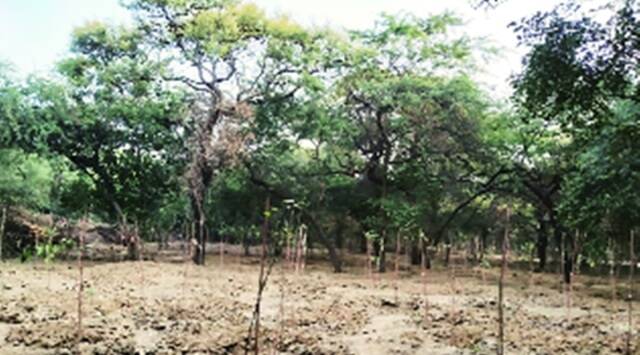‘What you will plant today you will see fructify’: HC passes directions on planting trees across Delhi
On May 29, the Delhi High Court had ordered the plantation of 10,000 trees across the city by utilising over Rs 70 lakh deposited as costs by defaulting litigants in various cases.
 During the course of the hearing on Friday, the high court directed that the trees planted on Mathura Road near the Supreme Court up to Oberoi Flyover shall be protected “for all times to come”.
During the course of the hearing on Friday, the high court directed that the trees planted on Mathura Road near the Supreme Court up to Oberoi Flyover shall be protected “for all times to come”. The Delhi High Court on Friday issued a bunch of directions regarding the plantation of trees in connection with a May 29 order where the court had ordered the plantation of 10,000 trees across the city by utilising “over Rs 70 lakhs” deposited by defaulting litigants as costs in various cases.
“It is a city that you have to beautify. What you will plant today you will see it fructify,” a single-judge bench of Justice Najmi Waziri said to the principal secretary of the public works department (PWD), who was present in court at the time.
On July 5, the court had directed the PWD and Municipal Corporation of Delhi (MCD) to ensure that “pits are dug up for tree plantation along streets, in the next two days and at least 4,000 trees are planted by the end of this week” after advocate Aditya N Prasad – one of the court commissioners in the matter – said that the “PWD has not responded despite various communications to officers of PWD, including communication to the engineer-in-chief and principal secretary, PWD”. Prasad had also said during the previous hearing that the trees procured by the forest department do not meet the parameters set by the court.
During the course of the hearing on Friday, the high court directed that the trees planted on Mathura Road near the Supreme Court up to Oberoi Flyover shall be protected “for all times to come”. “Concretisation shall be cleared up within 24 hours and a compliance affidavit shall be filed by the PWD with the prior concurrence of the engineer in chief,” Justice Waziri ordered.
The principal secretary and engineer in chief, PWD, assured the court that the digging of the pits will be done expeditiously. One of the court commissioners said that the 1,000 pits can be dug up and trees be planted in a day and the whole process can be completed in 10 days so that trees can take root in the ensuing monsoons.
Prasad at this stage drew the court’s attention to photographs of a road in Punjabi Bagh which had no trees. Questioning why there were no trees there, the high court said that pits should be dug up at 100 spots on Chaudhary Balbir Singh Marg by Sunday, they should be protected by concrete fencing and the engineer and chief, PWD, should ensure compliance.
“The trees shall be numbered and a census shall be maintained…,” Justice Waziri said, directing that PWD shall provide workmen for removing encroachments on public streets and local police will also provide assistance.
“Coordination in this regard shall be done by the engineer in chief with Aditya Prasad,” the high court said with respect to Punjabi Bagh.
Justice Waziri also said, “500 trees shall be planted in and around the elevated road going towards Palam airport and that forest department shall ensure that 5,000 trees are readily available for plantation”.
The court also said that gulmohar and palm trees will not be planted in the city. “Are palm trees meant for Delhi? Why are they planted under a flyover?…they will never grow…The money is being given to you by court…no more palm trees, no Gulmohar, and no eucalyptus,” Justice Waziri said to PWD officials, stating that only native trees should be planted.
In its May 29 order, the high court had appointed five advocates as court commissioners to identify areas where the trees can be planted, which would preferably be public roads. In this order, the high court had further said that each tree shall have a minimum of three years nursery age and a minimum trunk height of 10 feet, further directing that from the Rs 70 lakh “at least 10,000 trees shall be planted”.
With respect to the varieties of trees to be planted, the court had said that depending upon the soil type and topography, the deputy conservator of forests (DCF) may consider planting Pilkhan, Papdi, Kachnaar, Goolar, Kala Siris/Safed Siris, Jamun, Amaltas, Kadamb and Badh. Justice Waziri had also observed that the “land-owning agency” should plant the trees under the supervision of the tree officer/DCF, Delhi government, and further file a report along with photographs.







